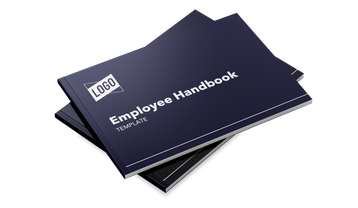What Is Human Capital Management?

Table of contents
- 1.What's the difference between HCM and HRM?
- 2.What does HCM encompass?
- 3.Recruitment and staffing
- 4.Performance management
- 5.Training and development
- 6.Compensation and benefits
- 7.Employee engagement
- 8.Succession planning
- 9.Compliance
- 10.HR analytics
- 11.HR technology integration
- 12.Diversity, equity and inclusion
- 13.What Is Human Capital Management? The Answer is TriNet.
What is human capital management? In a nutshell, human capital management (HCM) is a business strategy that views a company’s workforce as an asset. This is a departure from the way that employees have traditionally been viewed — as a business expense.
When you think of your employees as an asset, it can change how you think about them and treat them. Just as you would with other assets, you invest in them to maintain the greatest returns. When a company invests in employees — through training, for example — they become more productive and, therefore, more valuable to the business.
HCM encompasses traditional human resources administrative functions such as onboarding, payroll processing and benefits administration. After all, those functions are essential for employees. However, HCM also focuses on talent development, performance management and engagement. The term “HCM” also refers to the technology, or software, used to implement an HCM strategy.
Human resources professionals can use HCM solutions to benefit their companies. This article will provide an overview of what HCM does, the benefits of HCM and tips for effectively implementing HCM in your small or medium-sized company.
Human capital management is a framework for practices and strategies that organizations use to manage their workforce effectively. HCM is centered on developing a people-first culture to help businesses better adapt to meet challenges. It views the business's human resources as an interconnected ecosystem worthy of investment. It emphasizes the development of employees’ skills, capabilities, relationships and insights. An HCM solution aspires to maximize employee potential to contribute to the organization's success.
HCM software is a comprehensive suite of tools designed to streamline and enhance the management of an organization’s workforce.
This frees up the HR staff to spend more time nurturing the talent of your workforce. Also, accurate performance of tasks such as payroll and benefits administration improves the employee experience, which helps with employee retention. This software typically integrates multiple HR processes into a single platform, including:
- Payroll processing
- Employee data maintenance
- Recruitment and onboarding
- Performance management
- Training
- Compensation benchmarking
- Benefits administration
It's similar to HR software, often referred to as an HRIS, with a more centralized focus on humanizing employees and their needs.
What's the difference between HCM and HRM?
You might be thinking, "Wait, is this just a rebrand of "human resources management?" Not at all. It's more like an evolutionary improvement.
HRM focuses primarily on the operational and administrative tasks related to employee management, compliance support, payroll administration and benefits administration. It often functions more reactively, dealing with immediate needs and maintaining day-to-day operations. It focuses on processes and HR policies rather than strategic outcomes.
HCM, on the other hand, takes a more strategic view of managing employees as valuable assets who contribute to organizational success. Its nature is proactive, emphasizing talent development and employee retention, engagement and satisfaction. HCM integrates HR functions and workforce analytics to foster continuous improvement.
What does HCM encompass?
Because HCM takes a more holistic approach to workforce planning and management, its scope is fairly broad.
Recruitment and staffing
Businesses generally need to attract, select and onboard the right talent. This can be a complex task that might spin out of control if the company experiences a high volume of applications. According to Gartner, 36% of HR leaders say they don’t have the resources to recruit the talent they need.
The process can be stressful, time-consuming and fraught with manual error. Hiring managers can tend to make decisions based on gut instinct and personal biases. It costs employers 33% of a worker’s annual salary to hire a replacement for a worker who leaves, according to a report by HR Dive. The same report says 75% of the causes of employee turnover may be preventable. With the high costs of talent acquisition, HCM's comprehensive, data-driven insights can be invaluable.
HCM can help streamline recruitment and staffing processes by leveraging data analytics to identify skill gaps and forecast future hiring needs. It can cover HR strategy throughout the entire employee lifecycle. HCM emphasizes creating a strong employer brand that attracts top talent and implementing a structured onboarding process that integrates new hires into the organizational culture.
Performance management
Measuring employee performance both qualitatively and quantitatively can be a tough job, especially when employees "wear many hats" at the company or work on large teams. Performance management can become a point of contention, especially if you're not sure how or what to measure. At the same time, how do you make sure employees are meeting their full potential while maintaining a healthy work-life balance?
With streamlined, structured feedback processes, HCM can provide an open line for continuous dialogue between managers and employees. It can help to identify strengths, areas for improvement and development needs. This approach particularly encourages goal setting that is specific, measurable, aggressive yet achievable, relevant and time-bound. HCM can help create a more human-centered systematic framework that aligns individual employee goals with overall organizational objectives.
Training and development
By conducting skills assessments and identifying competency gaps, HCM can help organizations create targeted training programs that seek to address both company and individual employee goals. This might be a blend of formal training sessions, mentorship opportunities and e-learning platforms that cater to diverse learning styles.
HCM also shifts the focus to continuous learning by encouraging employees to pursue ongoing development through data-driven training initiatives. Instead of leaving employees to train themselves, which can be ineffective, you provide a more targeted pathway for learning based on gaps in the company's needs. Ultimately, this strategic alignment of training and leadership development contributes to building a more competent, motivated and happy workforce.
Compensation and benefits
By leveraging market research and benchmarking data, an HCM can help organizations get access this so a business can make informed compensation decisions that aligns with industry standards and employee expectations. This approach aims to help the business be confident and competitive with their compensation decisions.
Furthermore, HCM can help a business with employee benefit options — like flexible work arrangements, wellness programs and professional development opportunities — catering to the diverse needs of a workforce. With an online portal, employees can easily manage and track their benefits.
With a platform like TriNet that implements HCM strategies effectively, you can even view your team's data to see which benefits are best impacting job satisfaction. By continuously monitoring and evaluating compensation and benefits programs, your organization can adapt to market conditions and employee preferences.
Employee engagement
Because HCM centers both the employee and the organization, it can help create a work environment that prioritizes open communication and feedback, encouraging employees to voice their ideas and concerns. This cultivates a sense of belonging and value within the organization. Regular engagement surveys and pulse checks help identify areas for improvement. With enhanced employee relations, leaders are better able to address concerns proactively. Having these kinds of feedback loops all in one place can help reduce headaches and keep things accessible and organized.
By providing opportunities for professional growth through training, mentorship and career development, HCM can also help business to empower their employees to take charge of their careers. This can increase both loyalty to the company and employee productivity.
Succession planning
How does your organization prepare for future leadership transitions and talent shortages? Could the process use an overhaul? By identifying key roles and potential successors within the organization, HCM enables a systematic approach to internal talent through targeted training and development initiatives. This includes creating personalized development plans that equip high-potential employees with the skills and experiences to step into leadership positions when needed.
HCM also involves ongoing performance assessments to evaluate readiness and align individual aspirations with organizational goals, fostering a culture of growth. Furthermore, by incorporating mentorship and coaching programs, HCM can help nurture relationships between emerging leaders and seasoned executives, strengthening leadership pipelines.
Compliance
With compliance support, organizations can mitigate the risk of potential issues and penalties. HCM’s emphasis on regular training sessions for HR staff and employees on relevant rules and requirements — such as those concerning workplace safety, employment-related rules and requirements, and wage and hour laws — and encourage a culture of awareness and accountability. It keeps employees informed about their rights, while also making sure companies do all they can to help safeguard themselves and their employees.
HCM can also promote transparent communication between management and employees with constructive dialogue that addresses concerns and grievances. This proactive approach helps to build trust and collaboration, minimizing interpersonal skirmishes.
HR analytics
HCM can help compile data so the business can leverage HR analytics to transform data into actionable insights that can help clarify your workforce strategy and decision-making. By collecting and analyzing metrics like employee performance and turnover rates, HCM helps organizations identify trends and patterns. In turn, this information can help shape talent management.
Predictive analytics can also be used to help forecast hiring needs and compensation costs, assess the effectiveness of training programs and measure the impact of employee engagement initiatives on overall productivity. This data-driven approach can allow HR leaders to make informed decisions that optimize resource allocation and align with business goals.
Moreover, HCM can help integrate HR analytics into regular reporting processes, and these insights can be regularly updated based on the organization's changes.
HR technology integration
If you’re a small or medium-sized business, an HCM software service can help save you time. Instead of trying to run an HCM system in-house, you can rely on the expertise of a third-party HCM provider. You don’t have to use internal resources to maintain the system, the HCM provider takes care of that.
Look for an HCM provider that can integrate its technology with your current workflow. You can use the technology to enhance aspects of your workforce in your organization, making your HR processes more efficient and accurate while increasing employee engagement and retention.
Diversity, equity and inclusion
HCM helps embed these values into the core workforce strategies with initiatives that focus on creating a workplace culture that actively promotes inclusive hiring practices. By implementing unconscious bias training for hiring managers and developing structured interview processes, HCM helps to mitigate biases and foster equitable opportunities for all candidates.
Regular assessments of diversity metrics and employee feedback are essential components of HCM. It allows organizations to track progress and identify areas for improvement. By prioritizing diversity and inclusion through HCM, organizations can cultivate a more innovative, well-rounded, engaged workforce.
What Is Human Capital Management? The Answer is TriNet.
HCM solutions help you keep up in an environment of constant change. However, small and medium-sized companies may find it too expensive and time-consuming to implement human capital management on their own. For these companies, TriNet’s full-service HCM software and service helps provide the solution, combining convenience and support with cutting-edge technology.
When you work with TriNet, you can get an HR team dedicated to your success. You and your employees will receive the support and guidance you need to reap the benefits of HCM. TriNet’s cutting-edge HCM platform:
- Gives you the peace of mind of knowing that your HR administrative functions are being handled efficiently.
- Keeps you updated in HR compliance so you can comply with employment-related rules and requirements.
- Provides employees with self-service functions that enhances their work experience by allowing them to access and update their information relating to HR and benefits when they need to.
- Provides sophisticated data analytics to help management make informed decisions for the company’s future.
To find out just how easy it is for an SMB to gain all the advantages of HCM using TriNet’s strategic HR solutions, contact us today.

TriNet Team
Table of contents
- 1.What's the difference between HCM and HRM?
- 2.What does HCM encompass?
- 3.Recruitment and staffing
- 4.Performance management
- 5.Training and development
- 6.Compensation and benefits
- 7.Employee engagement
- 8.Succession planning
- 9.Compliance
- 10.HR analytics
- 11.HR technology integration
- 12.Diversity, equity and inclusion
- 13.What Is Human Capital Management? The Answer is TriNet.






